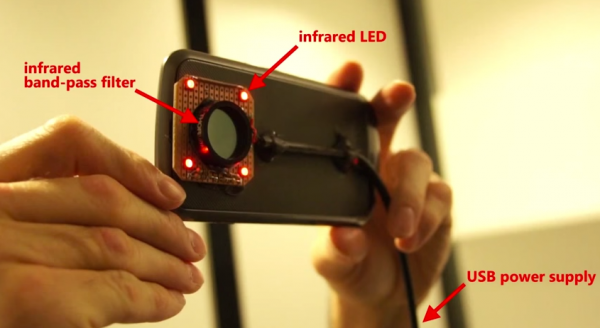Microsoft researchers have demonstrated a working prototype of a smartphone camera turned into a depth-sensing, Kinect-like thing of wonder. Unlike Google's elaborate Project Tango and its own Kinect gesture controller that's chock-full of cameras and microphones, the prototype sticks to a very simple solution in comparison. The infra-red cut filter from a Samsung
Galaxy Nexus (remember that one?) is removed and then a bandpass filter is applied, which makes the Nexus filter only recognize a limited, pre-defined range of light.
Finally, a LED light ring is placed around the lens. The assembly is said to take the Microsoft engineer 10 minutes tops. From then on, it's up to the computer to compute the distance and depth of an object that's being held in front of the camera. The end result is an IR-camera with enough sensitivity to recognize the movements of different finger joints.
Researchers say the depth-sensing system is simple enough to be retroactively added to existing camera sensors, although the camera will end up unable to capture normal images. It's not clear where Microsoft could be going with this technology, as the company recently pulled the plug on its 3D Windows Phone project.
Codenamed 'McLaren', it had a 3D Touch control system reportedly derived from Kinect technology, but technological challenges and an inability to come up with a marketable use for the interface led Microsoft to abandon it for now.
Check out the video below to see how MS' engineers reworked a webcam in the same way, with resounding success.
via
Slashgear
















Things that are NOT allowed:
To help keep our community safe and free from spam, we apply temporary limits to newly created accounts: